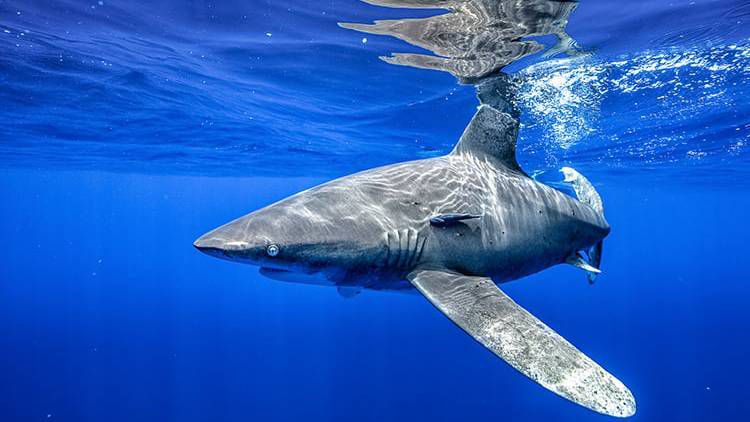NOAA Fisheries introduced new rules Thursday that will protect oceanic whitetip sharks from being hooked by longline fishers, according to a news release.
The new rules prohibit the use of steel wire leaders on hooks deployed in the Hawaii deep-set longline fishery, which operates around the main Hawaiian Islands, the Northwestern Hawaiian Islands, and the U.S. Pacific Remote Island Areas. Instead, monofilament nylon leaders should be used.
The rules also require fishers in the Western Pacific longline fisheries to remove fishing gear from oceanic whitetip sharks that get caught in it.
Oceanic whitetip sharks have distinct white markings on the tips of their dorsal fins, grow up to 11 feet long and can live for up to 25 years. They exist around the world in tropical and subtropical waters and often reside near the surface of the water.
NOAA Fisheries listed oceanic whitetip sharks as threatened in 2018 under the Endangered Species Act. In the Pacific, the species has declined by 80-95% since the mid-1990s.
The sharks are threatened because they get caught in longline fishing gear, large fishing nets and gillnets. Not meaning to capture the sharks, fishers often discard them, in what is known as bycatch. Oceanic whitetip sharks are also harvested internationally for their fins.
NOAA said the new rules, which go into effect on May 31, are anticipated to increase the species bycatch survival by 30%.
The gear used by deep-set longline fishers usually comprises a continuous mainline set below the surface, which is supported horizontally in the ocean by floats with branch lines attached at intervals. Each branch line has a single baited hook at its end, and wire leaders are short metal wire fishing lines that attach the rest of the fishing line to the baited hook, according to NOAA.
However, the metal lines are too strong for sharks to cut themselves free when they are hooked. Replacing them with nylon will allow the sharks to bite through the line and free themselves. If a shark doesn’t bite through the nylon, a fisher can also cut the line close to the hook to free the shark.
NOAA said it made the rules in conjunction with Hawaii longline fishers and the Western Pacific Fishery Management Council. Some longline fishers, who are usually fishing for tuna, already made the change to monofilament nylon leaders starting in Nov. 2020.
“The Hawaiʻi fishing fleet sets the standard for longline tuna fishing, with high levels of observer coverage and strong regulations to limit the effects of the fishery on protected species,” said Michael Tosatto, Regional Administrator, NOAA Fisheries Pacific Islands Regional Office.
Michelle Broder Van Dyke covers the Hawaiian Islands for Spectrum News Hawaii.



